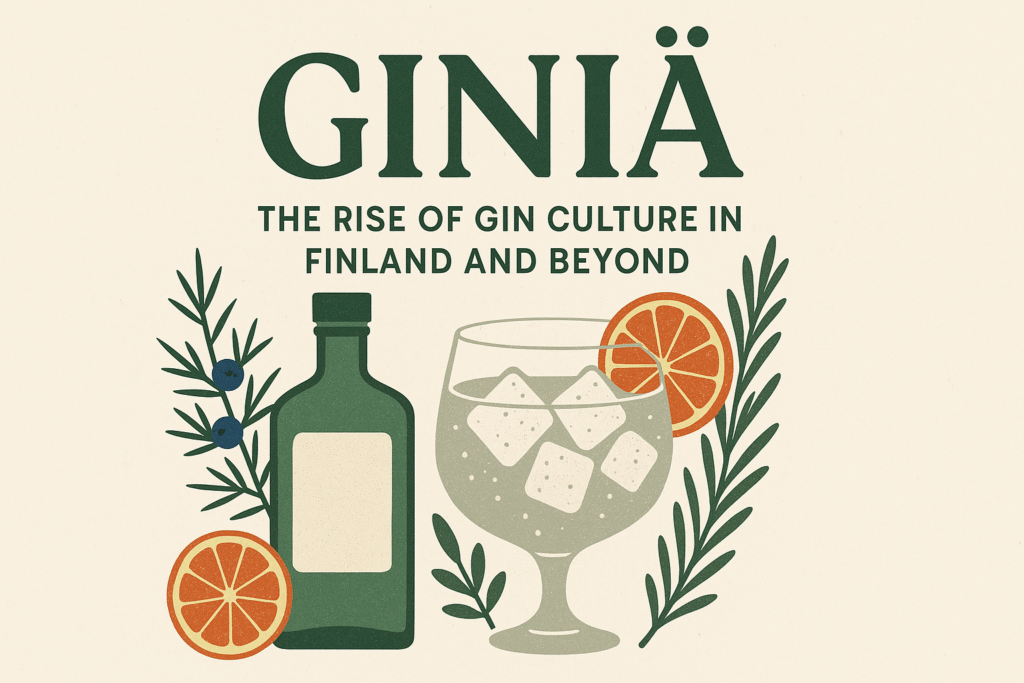Gin or Giniä as it’s known in Finnish in its partitive form has seen a remarkable renaissance. What was once considered a dusty bottle in the back of the liquor cabinet has reemerged as one of the trendiest and most beloved spirits globally. From Helsinki to London, from artisanal distilleries to rooftop cocktail bars, gin has reclaimed its place in the spotlight. But what’s driving the surge of interest in giniä, particularly in Finland?
The Roots of Gin
To understand the modern love for giniä it’s worth revisiting its origins. Gin’ roots trace back to the Netherlands in the 17th century, where a juniper-based spirit called jenever was popular. British soldiers brought the drink back home, and it evolved into what we now know as gin. Over the centuries, gin developed a notorious reputation in the UK, especially during the “Gin Craze” in the 18th century. However, over time, regulations and improved distillation methods elevated gin’s image and quality.
Finnish Craft and Innovation
The rise in popularity of giniä can be directly linked to the broader craft alcohol movement. Over the past decade, Finnish consumers have shown an increasing interest in locally made, small-batch beverages. This movement isn’t limited to beer or cider — it has dramatically influenced the gin scene.
Several microdistilleries have emerged throughout Finland, producing unique and high-quality giniä using local botanicals like arctic berries, pine needles, sea buckthorn, and even birch leaves. The result is a gin landscape that’s as diverse as the country’s geography.
Brands like Helsinki Distilling Company and Kyrö Distillery have led the charge. Kyrö Napue Gin, in particular, achieved international fame after winning the inaugural International Wine and Spirit Competition (IWSC) Gin & Tonic Trophy in 2015. With its rye base and local botanicals, it exemplifies Finnish craftsmanship and innovation.
What Makes Finnish Giniä Special?
While traditional gins rely heavily on juniper berries, Finnish gins incorporate the unique flora of the Nordic environment. The long summer days and short growing season produce intensely flavored ingredients. This results in giniä with robust, fresh, and often unexpected flavor profiles.
Many distilleries use foraged herbs and plants, which gives their gin a distinctive sense of place. This concept, known as “terroir” in wine, applies increasingly to premium gins. Drinking a glass of Finnish giniä can evoke a walk through a summer forest or a sip of wild berries on a cold winter day.
The Gin and Tonic Boom
No discussion of giniä would be complete without mentioning its most popular pairing: tonic. The gin and tonic (G&T) has undergone a transformation of its own, becoming a stylish and sophisticated cocktail. Gone are the days of overly sweet, flat mixers. Today’s tonics are crafted with care, often designed to complement specific gins.
In Finland, bars and restaurants have embraced the G&T culture wholeheartedly. It’s not uncommon to see “G&T menus” offering dozens of combinations, from classic pairings to creative infusions with herbs, fruits, or even edible flowers. The visual appeal — served in large balloon glasses with elaborate garnishes — adds to the experience.
Home Bartending and Gin Tastings
The pandemic era gave rise to another trend: the home mixologist. With people spending more time at home, interest in cocktail-making has surged. Gin, with its complexity and versatility, became a favorite spirit for amateur bartenders. As a result, sales of giniä in Finland and other countries rose significantly during lockdowns.
Gin tastings have also become increasingly popular, both virtually and in person. Events that allow consumers to compare various gins — often with food pairings or guided tours through distilleries — provide an immersive way to explore giniä culture.
Sustainability and the Future of Giniä
As consumers become more environmentally conscious, gin producers are taking note. Many Finnish distilleries prioritize sustainability in their operations, using renewable energy, recyclable packaging, and ethically sourced ingredients. This aligns well with Finnish values and enhances the appeal of locally made giniä.
The gin market is expected to continue growing, with innovations such as alcohol-free gins, barrel-aged gins, and exotic botanical infusions gaining popularity. In Finland, the close connection to nature and appreciation for craftsmanship means that giniä will likely remain a key player in the premium spirits market.
Read More: Traceloans.com Debt Consolidation: A Smart Solution for Financial Freedom
Conclusion
Whether sipped in a cozy Lapland cabin or mixed into an elegant cocktail at a city bar, giniä has found a permanent place in the Finnish drinking culture. With its rich history, regional variation, and ever-evolving identity, gin offers something for everyone. As more people discover the nuanced world of giniä, it becomes clear that this spirit’s revival is no fleeting trend — it’s a new golden age.
So next time you raise a glass, consider reaching for a Finnish giniä. You may just discover a whole new world of flavor waiting inside that crystal-clear liquid.
